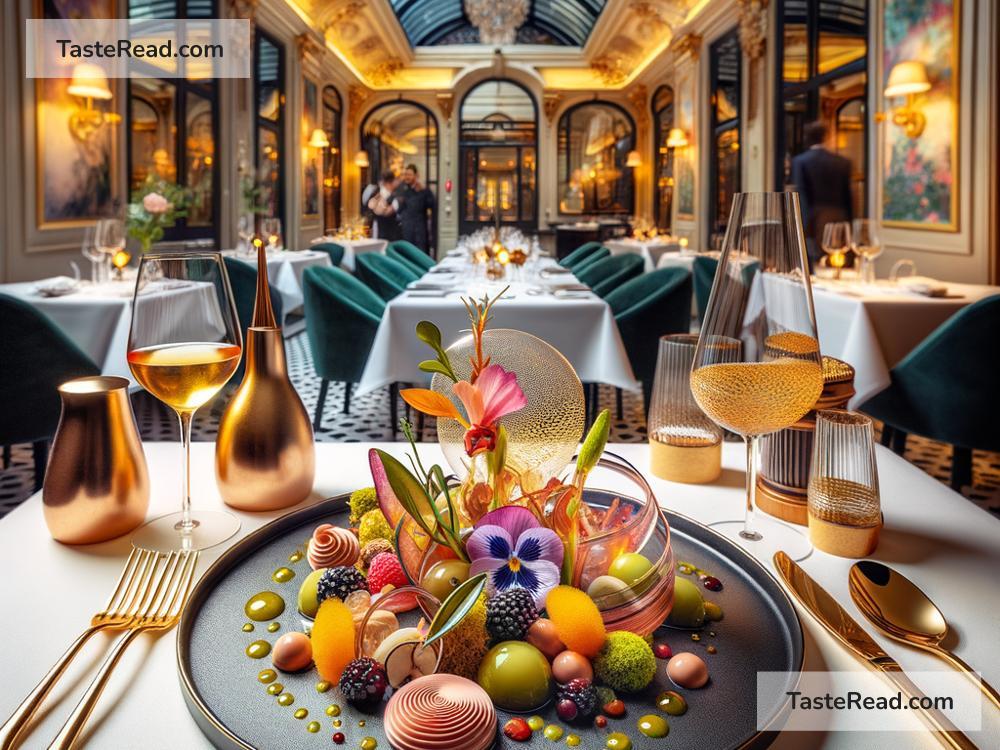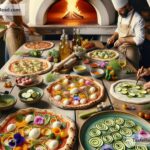Exploring Innovative Plating Techniques in Modern Gastronomy in Paris, France
Paris, the city of lights and love, is also a global hub for art, fashion, and food. When it comes to gastronomy, Paris has always been at the forefront of innovation and creativity. Chefs in this vibrant, culinary scene are not simply creating meals—they are producing works of art on plates. Innovative plating techniques have become as essential as the taste and texture of the food itself, and today’s dining experience often feels like stepping into a gallery. In this blog, we’ll explore the exciting world of modern plating techniques in Parisian gastronomy and discover just how far chefs are willing to go to make your meal unforgettable.
What Is Plating?
Plating refers to the way food is arranged and presented on a plate. It is the visual aspect of gastronomy; in other words, it’s about making your food look beautiful before you taste it. While taste remains central to a dining experience, the presentation also plays a crucial role. An attractive plate elevates the dining moment by exciting your eyes and building anticipation for the flavors to come.
In Paris, plating is not just about arranging food neatly; it’s an art form that chefs use to tell stories, convey emotions, and reflect their personalities. Some chefs even experiment with plating techniques to challenge traditional norms and push the boundaries of creativity.
The Role of Innovation in Plating Techniques
Chefs in Paris are constantly finding new ways to innovate. Traditional plating once focused on symmetry and balance, with an emphasis on making food look inviting yet straightforward. Today, modern plating techniques involve intricate designs, bold compositions, and the use of unexpected elements.
One popular trend involves using natural shapes and elements. Some chefs take inspiration from landscapes or organic forms, arranging food so it looks like rivers flowing across the plate or gardens in full bloom. Others play with abstract designs, creating vibrant splashes of color and geometric patterns that feel more like paintings than dinner plates.
Additionally, chefs now use unconventional tools to assist in plating. Brushes, tweezers, and even paint spatulas have replaced traditional kitchen utensils. These tools allow chefs to create layers, textures, and delicate structures previously impossible to achieve.
Highlights of Modern Gastronomy in Paris
Paris is home to some of the world’s most celebrated chefs who are leading the charge in innovative plating. Fine dining establishments like Guy Savoy, Pierre Gagnaire, and Arpège have elevated plating to an art form. Each plate offers something unique—a fusion of creativity, skill, and passion that leaves diners amazed.
Here are some highlights of modern plating techniques you might encounter in Paris’s top restaurants:
1. Minimalist Plating
Chefs use clean designs and small portions to focus attention on specific ingredients. This technique showcases the simplicity and elegance of each dish. For example, an arrangement of bright green peas, a dollop of creamy sauce, and one precisely cut piece of fish on a plain plate turns into a piece of minimalist art.
2. Layering and Texture
Chefs experiment with layering ingredients or adding textures on top of smoother elements. Whether it’s a crunchy garnish on soft mousse or stacked components to form a mini edible sculpture, these techniques add visual appeal and extra depth to the dining experience.
3. Color Blocking
Color is often used to create contrasts and focal points on the plate. Bright purples, greens, oranges, and reds arranged in stylish lines or splashes draw attention to different flavors and ingredients.
4. Nature-Inspired Designs
Many chefs draw inspiration from nature, mimicking the look of landscapes, forests, or the ocean. For example, food might be arranged to look like flowers in a field or a rock formation, giving diners a sense of connection with the environment and the seasons.
5. Interactive Plating
Interactive plating brings enjoyment and surprise to meals. Some plates are designed so that diners can mix, pour, or assemble elements themselves. This turns eating into an experience of creativity and discovery.
The Dining Experience
Part of what makes modern plating so exciting is that it enhances the entire dining experience. When you eat in Paris, you’re not just tasting the food—you’re engaging with its visual beauty, craftsmanship, and story. From the moment a dish is placed in front of you, you’re taken on a journey that begins with your eyes and ends with your taste buds.
Many chefs also use plating to emphasize cultural or environmental messages. By creating dishes that look like nature or incorporate sustainable ingredients, they remind diners of the importance of preserving the planet.
The Future of Culinary Art
As innovation continues to play a key role in gastronomy, Parisian chefs are likely to keep experimenting and refining their plating techniques. With advanced tools, new artistic influences, and a bold desire to break boundaries, plating will continue to evolve into an even more immersive and exciting aspect of dining.
Conclusion
Paris is the perfect place to experience modern gastronomy’s innovative plating techniques. Whether you visit Michelin-starred restaurants, trendy bistros, or experimental dining spaces, each meal in the city feels like opening a window to creativity and art. The next time you find yourself in Paris, take the opportunity to not only taste the flavors but also appreciate the beauty on your plate—it will be an unforgettable culinary adventure!


